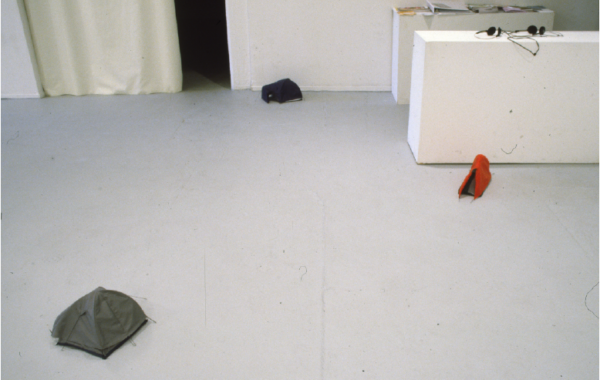- The Village
- The Village
- The Village
- The Village
The Village
15 June–
13 July 2002
Curated by: Sydney Hermant


The Village, exhibition at Or Gallery, 2002.


The Village, exhibition at Or Gallery, 2002.


The Village, exhibition at Or Gallery, 2002.


The Village, exhibition at Or Gallery, 2002.


The Village, exhibition at Or Gallery, 2002.
The Village
Una Knox, Corrin Sworn, Jace Lacek, Amy Lockhart, Holly Ward, Warren Auld, Terrence Dawes, Sabine Bitter, Helmut Weber
Curated by: Sydney Hermant
Not Much to Do: The Village is based on the writing of Terrence Dawes, Nothing to Do. Dawes, a recent MFA graduate in Film Production from Concordia University, also holds a BFA from the Emily Carr Institute of Art and Design.
In his essay Nothing to Do, Dawes explores the late 60s television show The Prisoner, the critical question being the investigation into the development of narrative and its Proustian powers of mnemonic identification; creation of identity itself through narrative conceptions of time. By using Number 6, The Prisoner, as his paranoid subject, Dawes explores the many tangents associated with the process of narrative construction such as landscape, millenarianism, and tourism:
“Portmeirion, the site of the filming of The Prisoner, was designed by Clough Williams- Ellis between 1925 and 1975 on his own private peninsula in Cardigan Bay, on the coast of Snowdonia in Wales. It was visited as a tourist resort by many including Noel Coward who used Portmeirion as a retreat at which he wrote Blithe Spirits during the war, because he felt people needed to laugh during such times of horror. Williams-Ellis was an environmentalist who felt that the ‘beauty of landscape was being ruined by modernity and that the development of a naturally beautiful site need not lead to its defilement’.
Utopian visions of tourist landscapes are an attempt to recapture a lost Arcadia whether it’s the recreation of 19th century Prince Edward Island in northern Japan, the invention of the Anne of Green Gables mythology on P.E.I itself, Portmeirion or Disneyland. These utopias, while offering narrative idealizations of the past, also contain the past as well as the viewer within its own narrative constraints.”
Portmeirion’s fictional name in The Prisoner is The Village, a name more recently used by Thomas Kincade for his gated community, created in the likeness of his own paintings (see America’s Most Profitable Artist by Susan Orlean, New Yorker, Oct 15 2001.)
Artist Bios
Kathy Slade
Kathy Slade graduated from Simon Fraser University in English Literature and Studio Arts in 1995 and was that year’s recipient of the Helen Pitt Award. She is a practicing artist living in Vancouver. Slade’s work will be shown in a solo exhibition called Embroidered Monochrome Propositions and Other New Work at the Western Front in Vancouver in September 2002.
Una Knox
Una Knox is a practicing artist living in Vancouver and a graduate from the Emily Carr Institute of Art and Design in photography. Her photographic piece Tent Life is currently showing at the VTO in London.
Warren Auld
Warren Auld is an artist and musician hailing from Halifax and Montreal, currently living in New Hampshire. He is currently working on a project involving Books on Tape.
Michelle Marek
Michelle Marek is a self-taught book and paper maker, living in Montreal. She has bound an illustrated novel by Shayne Ehman, as well as her own bookworks. Some of her collaborative work can be found in Mix magazine, Sept issue.
Jace Lacek
Jace Lacek is a practicing visual artist living in Montreal, a graduate from the Emily Carr Institute of Art and Design in photography. He will be showing a series of photographs based on the living room.















